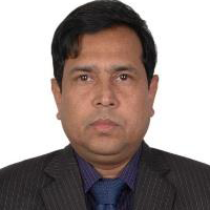International Journal of Mathematical Sciences and Computing (IJMSC)
IJMSC Vol. 11, No. 2, 8 Jun. 2025
Cover page and Table of Contents: PDF (size: 760KB)
Stochastic Model Including Refining Stage to Improve Water Supply System in Bangladesh
PDF (760KB), PP.52-62
Views: 0 Downloads: 0
Author(s)
Index Terms
Stochastic Programming, Recourse Problem, Risk Aversion Optimization
Abstract
People around the world use fresh water daily for drinking, sanitation, and washing. At the same time, they discharge wastewater into canals, which can be harmful to both human health and the ecosystem of surface water sources. A significant amount of water is consumed for washing purposes. However, it is possible to disinfect and purify this large volume of wastewater for reuse. The process of treating used wastewater is known as refinement. This study aims to develop a two-stage stochastic recourse model that refines wastewater before it is released into the environment. The goal is to ensure that the refined wastewater does not harm the ecosystem. The treated water can then be repurposed for various secondary uses. The proposed model will account for uncertainties related to the availability of water from the supplying authority. To evaluate the effectiveness of this model, we will compare the costs of the water supply system both with and without refinement. The advantages of the proposed model will be assessed through calculations of the expected value of perfect information (EVPI), the value of the stochastic solution (VSS), the recourse solution (RS), the wait-and-see solution (WS), and the expected solution based on first-stage decisions (EEV). Additionally, a risk-averse (RA) optimization model will be used to analyze the sensitivity of system costs.
Cite This Paper
Md. Asaduzzaman, Nazrul Islam, Sabina Yeasmin, Md. Babul Hasan, "Stochastic Model Including Refining Stage to Improve Water Supply System in Bangladesh", International Journal of Mathematical Sciences and Computing(IJMSC), Vol.11, No.2, pp. 52-62, 2025. DOI: 10.5815/ijmsc.2025.02.05
Reference
[1]Introduction to Stochastic Programming - John R. Birge, François Louveaux, Sep. 14, 2024.
[2]A. Shapiro, D. Dentcheva, and A. Ruszczynski, Lectures on Stochastic Programming: Modeling and Theory, Third edition, pp. 505–525, 2021, doi: 10.1137/1.9781611976595.bm.
[3]J. Liu., Development of water supply services for the formation of eco-friendly city environment, IOP Conf Ser Earth Environ Sci., vol. 937, no. 4, p. 042027, Dec. 2021, doi: 10.1088/1755-1315/937/4/042027.
[4]S. Roy and S. Dutta, Opportunities and challenges for promoting sustainable water services to the urban poor in Dhaka city, J. Environ. Sci. & Natural Resources, vol. 10, no. 2, pp. 1–10, 2017, doi: 10.3329/jesnr.v10i2.39007.
[5]MB Hasan, Managing uncertainty in fishing and processing of an integrated fishery, ORiON, vol. 28, no. 1, pp. 37-58, 2012.
[6]A. M. Sarkar, A. K. M. Lutfor Rahman, A. Samad and J. B. Islam, Surface and ground water pollution in Bangladesh: a review, vol. 6, no. 1, pp. 2518–0134, 2019, doi: 10.20448/journal.506.2019.61.47.69.
[7]M. Hasan, A. Shahriar, K. Jim, Water pollution in Bangladesh and its impact on public health, Heliyon, vol. 5, no. 8, p. e02145, 2019, doi: 10.1016/j.heliyon.2019.e02145.
[8]N. T. Chowdhury, Water management in Bangladesh: An analytical review, Water Policy, vol. 12, no. 1, pp. 32–51, 2010, doi: 10.2166/WP.2009.112.
[9]S. K. Karn and H. Harada, Surface water pollution in three urban territories of Nepal, India, and Bangladesh, Environ Manage, vol. 28, no. 4, pp. 483–496, 2001, doi: 10.1007/S002670010238.
[10]S. Faroque and N. South, Water pollution and environmental injustices in Bangladesh, International Journal for Crime, Justice and Social Democracy, vol. 11, no. 1, doi:10.3316/informit.379361627253270.
[11]M. J. Naderi and M. S. Pishvaee, A stochastic programming approach to integrated water supply and wastewater collection network design problem, Comput Chem Eng, vol. 104, pp. 107–127, 2017, doi: 10.1016/J.COMPCHEMENG.2017.04.003.
[12]Y. Xu, W. Li, X. Ding, G. Huang, and Y. Fan, A stochastic multi-objective chance-constrained programming model for water supply management in xiaoqing river watershed, MDPI, vol. 9, no. 6, 2017, doi: 10.3390/w9060378.
[13]M. Housh and A. Ostfeld, Limited multi-stage stochastic programming for managing water supply systems, ElsevierM Housh, A Ostfeld, U ShamirEnvironmental Modelling & Software, vol. 41, pp. 53–64, 2018, doi: 10.1016/j.envsoft.2012.11.006.
[14]B. Yung and B. Tolson, Risk assessment of a water supply system under climate variability: a stochastic approach, International Journal of Civil Engineering, vol. 38, no. 3, pp. 252–262, 2011, doi: 10.1139/L10-132.
[15]D. Walkup, Stochastic programs with recourse, International Journal on Applied Mathematics, vol. 15, no. 5, pp. 1299–1314, 2024.
[16]G. Dantzig, On the solution of two-stage linear programs under uncertainty, 1961.
[17]P. A. Jensen and J. F. Bard, Nonlinear programming methods. S1 Separable programming, Operations Research Models and Methods, pp. 667, 2003.
[18]https://dwasa.org.bd/
[19]H. Felfel and O. Ayadi, A stochastic programming approach for a multi-site supply chain planning in textile and apparel industry under demand uncertainty, International Journal of Supply and Operations Management, 2024.
[20]F. S. Hillier and G. J. Lieberman, Introduction to operations research. 2015.



